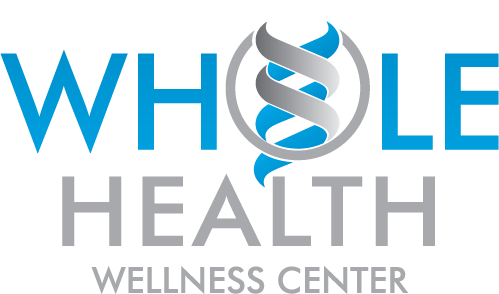by Dr. Katie DiNello, ND
Do you have undiagnosed fatty liver disease? You may be surprised to learn that most people are unaware they have fatty liver. Here’s why it’s important to test and assess your risk for fatty liver.
What is Fatty Liver Disease?
Metabolic dysfunction-associated steatotic liver disease (MASLD), also known as Nonalcoholic fatty liver disease (NAFLD) is the most common cause of chronic liver disease in the western world, affecting 30% of this population. It is present in up to 95% of obese individuals and 70% of those with Type 2 Diabetes. Over the next 10-20 years, NAFLD will be the leading cause of liver transplants – surpassing Hepatitis C and alcoholic fatty liver disease.
NAFLD includes both nonalcoholic fatty liver (NAFL) and nonalcoholic steatohepatitis (NASH). NASH is the more advanced type and more likely to progress to fibrosis, cirrhosis, liver cancer, and eventually death due to liver failure.
NAFLD develops as fat accumulates in the liver. However, there are many factors involved including oxidative stress and mitochondrial dysfunction. Both genetic and environmental factors leading to obesity, insulin resistance, and an altered intestinal microbiome are heavily involved. Insulin resistance causes fat deposits in the liver, leading to inflammation and oxidation of liver cells. An altered intestinal microbiome causes increased intestinal permeability and eventually chronic inflammation in the liver.
Other risk factors associated with NAFLD include hypothyroidism, polycystic ovarian syndrome, Vitamin D deficiency, excess steroid use, and metabolic syndrome.
How is Fatty Liver Diagnosed?
Do you have undiagnosed fatty liver disease? Most people are unaware they have fatty liver. It’s commonly diagnosed by accident as an incidental finding on abdominal imaging. For example, a patient may get an abdominal CT for constipation or diarrhea, and the results say fatty liver was also found. This can be surprising and shocking for many patients.
Since the prevalence of NAFLD is increasing, it’s more important to test for it. Most providers test for liver enzymes (ALT and AST) during routine bloodwork. If either of these levels are elevated, it should be investigated further. Liver enzyme elevations are a sign of liver inflammation or injury but don’t necessarily mean you have fatty liver. More specifically, a ratio of AST/ALT >2.0 suggests the presence of NAFLD. Furthermore, you can ask your provider for a Fib-4-Index. This is a very simple calculation added to a comprehensive metabolic panel. Otherwise, you can use the below link to calculate your Fib-4-Index based on previous bloodwork you’ve had. The Fib-4-Index is a calculation based on age, liver enzymes, and platelet count that helps to detect liver fibrosis. Recent research also suggests it may predict cardiovascular events.
https://www.mdcalc.com/calc/2200/fibrosis-4-fib-4-index-liver-fibrosis
The Enhanced Liver Fibrosis Score (ELF) is another blood testing assessing proteins that can also diagnose NAFLD.
Additional labs I recommend ordering to help assess not just liver health, but overall metabolic health include insulin, small dense LDL cholesterol, triglycerides, uric acid, leptin, ferritin, and C-reactive protein.
What Can I Do to Reduce My Risk for Fatty Liver?
In addition to working with your provider to evaluate your risk for fatty liver, focus on the following lifestyle habits to promote healthy liver and metabolic health:
- Follow a Mediterranean Diet low in added sugars and hydrogenated oils and rich in fiber from vegetables and fruits and omega-fatty acids from fish, avocados, nuts/seeds, and olive oil. A Mediterranean Diet will help to reduce your risk for metabolic syndrome, insulin resistance, elevated inflammation, and elevated cholesterol levels. It will also help to reduce your consumption of glucose, fructose, and uric acid which perpetuate fatty liver.
- Maintain a healthy weight by creating an energy deficit through caloric restriction or intermittent fasting. A risk factor for fatty liver is obesity. While this is complex, energy restriction is one way to help maintain a healthy weight.
- Reduce your exposure to environmental toxins by understanding the chemicals in your cleaning and personal care products. TAFLD or Toxicant-Associated Fatty Liver Disease is a form of NAFLD due to the harmful effects of environmental toxins. Utilize the Environmental Working Group Skin Deep App to evaluate these products.
- Support a healthy and diverse microbiome through diet and exercise. Eat a diet rich in fiber and fermented foods. Do additional gut testing and treatment protocols with your provider if needed.
- Move your body! Avoid being sedentary (get more than 5,000 steps per day). At minimum, aim for 150 minutes of moderate-intensity aerobic exercise with at least 2 sessions of strength training per week. Exercise is vital for maintaining a healthy weight and managing cardiovascular disease.
- Address elevated inflammation levels. A common sign of inflammation is elevated ferritin, a form of iron. Dysmetabolic iron overload syndrome due to metabolic syndrome is a common cause of elevated ferritin and is associated with the development of fatty liver disease.
With the end of the year approaching, it’s a great time to take advantage of your insurance benefits. Schedule with one of our naturopathic doctors to assess your risk for fatty liver disease! https://www.wholehealthllc.com/contact/

